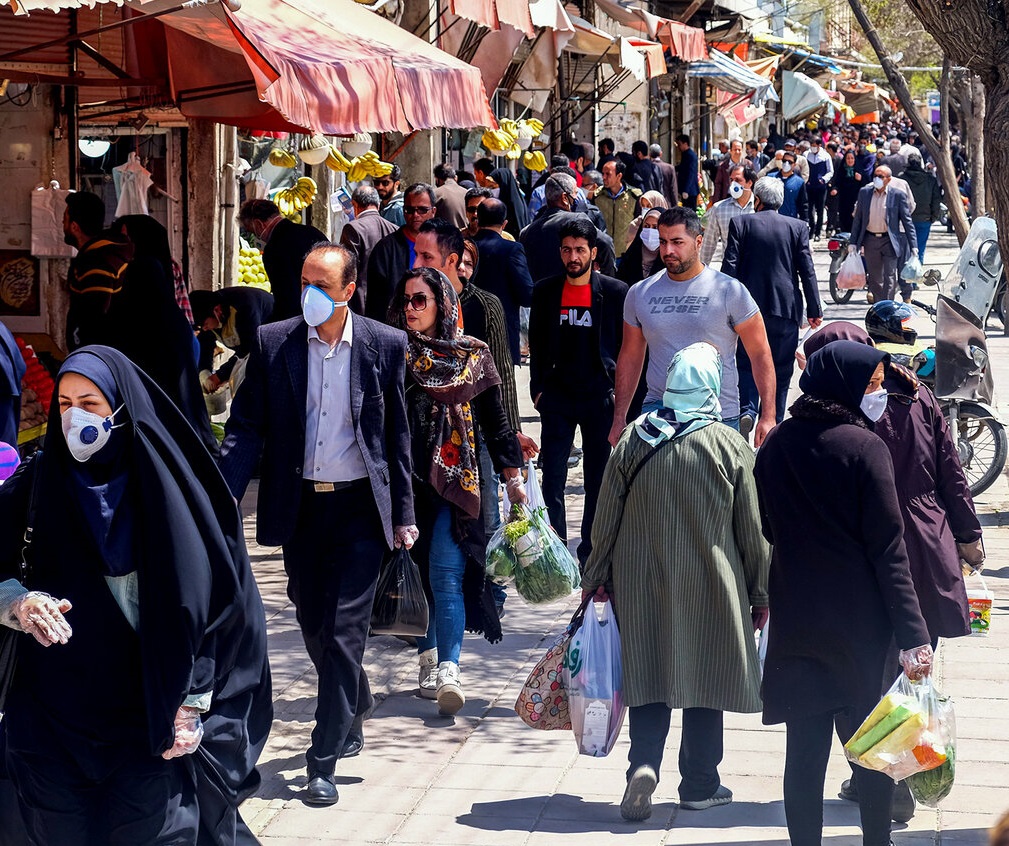More than 64% respondents to an opinion poll in Tehran said they need government aid amid the coronavirus outbreak.
According to the telephone survey of 1,028 residents conducted by the Iranian Students Polling Agency from April 5-8, a total of 64.4% said they need government aid due to the economic hardship inflicted by the coronavirus outbreak, 34.6% said they don’t and 1% didn’t respond.
There were no significant differences in opinion between respondents in terms of gender or age, but there is a marked correlation between people’s education and their need for government aid.
Persons with lower education levels need more aid: 74.7% of adults without a university degree or high school diploma said they needed aid.
Only 39.1% of people with Masters and PhD degrees said they needed the government’s financial help. The poll’s finding also shows those between 30-49 years needed state assistance the most.
$4.8b Aid Package
The government has approved a 750-trillion-rial ($4.8 billion) package to help low-income households and struggling businesses impacted by the rapidly spreading coronavirus. The loans will be given to small- and medium-sized enterprises hit hard by the pandemic, according to the website of the Central Bank of Iran.
The lending rate will be 12% to be repaid within two years, Abdolnasser Hemmati, the CBI governor said.
Commenting on the interest rate, Hemmati said it is reasonable, given the high inflation rate in the country.
“Even if banks set 18% interest on loans, the real interest rate would still be negative when compared to the annual inflation … Any rate below 12% would apparently impose further financial strain on banks,” he said.
Hemmati said only businesses that did not lay off workers during the corona crisis would be eligible for the loans. He instructed banks to process the loans soon and cut red tape.
Previous Survey
The outbreak of coronavirus has resulted in the decline of income for more than half the Iranian population, ISPA's previous opinion poll conducted at the national level between April 12-15 revealed.
Businesses of 41.7% of 1,563 respondents were closed down and 13.5% lost their jobs altogether while 26.3% said their economic situation remained intact and 0.6% saw their livelihoods improve. About 1.6% of respondents provided other answers.
“A total of 783,000 people have filed for unemployment since March 13, of whom 654,000 were found eligible for benefits,” Masoud Babaie, an official with the Ministry of Cooperatives, Labor and Social Welfare, said last week.
“The total number of individuals receiving unemployment benefits last year was 260,000,” he was quoted as saying by Mehr News Agency.
Hojjat Mirzaie, an official with the Ministry of Cooperatives, Labor and Social Welfare, said earlier that most of those who had filed for unemployment were employed in the services sector.
Ali Rabiei, government spokesman, has said the economy could lose up to four million jobs as a result of the new coronavirus.
“More than 12 million workers are employed in the services sector. The early impacts of unemployment can be seen in 10 business groups that were closed as soon as the virus was confirmed. Close to 3.3 million of the employed population in the official economy are directly affected by the crisis,” he was quoted as saying by the Persian-language daily Etemad.
Of those who have filed for unemployment insurance, 149,000 hail from Tehran Province, according to Anoushiravan Mohseni-Bandpay, the provincial governor of Tehran.
Tehran Province, wherein lies the capital city, registered an 8.8% unemployment rate in the fourth quarter of the current Iranian year (Dec. 22, 2019-March 19). The province’s employment rate stood at 38% and its labor force participation rate was 41.7% in winter, according to the latest data provided by the Statistical center of Iran.
About 56% of the previous survey's respondents were in favor of stay-at-home order while 39.6% supported the reopening of economic activities despite the pandemic, while 4.4% did not respond.
Risk-Based Easing
The so-called "low-risk" businesses affiliated to Tehran Guild Chamber opened their doors on April 18 to resume activities as per the "Smart Distancing Initiative" to tackle the COVID-19 outbreak while minimizing its economic fallout.
Indoor shopping malls reopened in the capital a few days later.
According to an announcement by the Health Ministry, "high-risk" places such as cultural and sport centers, beauty salons and hotels are to remain closed until further notice.
As per the Smart Distancing Initiative, low-risk businesses were allowed to resume activities on April 11 in all provinces, except Tehran, which followed suit on April 18.
Government offices are to operate from 7 a.m. to 2 p.m. The scheme allows one-third of employees in each workplace to undertake teleworking.
The previous survey also showed coronavirus lockdowns caused tensions in 15.8% of families across the country; 84% reported no such tensions while 0.2% failed to respond to this question.
About 36.8% were worried about getting infected by the virus to a great extent; 17.1% to some extent; 21.9% had little worry about the disease while 24% were not worried at all.
Women, especially those between 18 and 29 years of age and people with Masters and PhD degrees, had more concerns about the spread of the infectious disease. Concerns were less dominant among men, those above 50 years of age and adults without a university degree or below high school diploma.
Asked whether they’ve made any donation during the past two months, 34.7% responded yes, 9.5% said they intended to donate to those affected by the pandemic in the future while 5.8% said they haven’t offered any help to others and did not intend to do so. About 48.6% said they couldn’t afford to donate and 1.3% did not respond.
People spent an average of 163 minutes per day outdoors during the coronavirus outbreak, registering an average of 264 minutes for men and 72 minutes for women.


